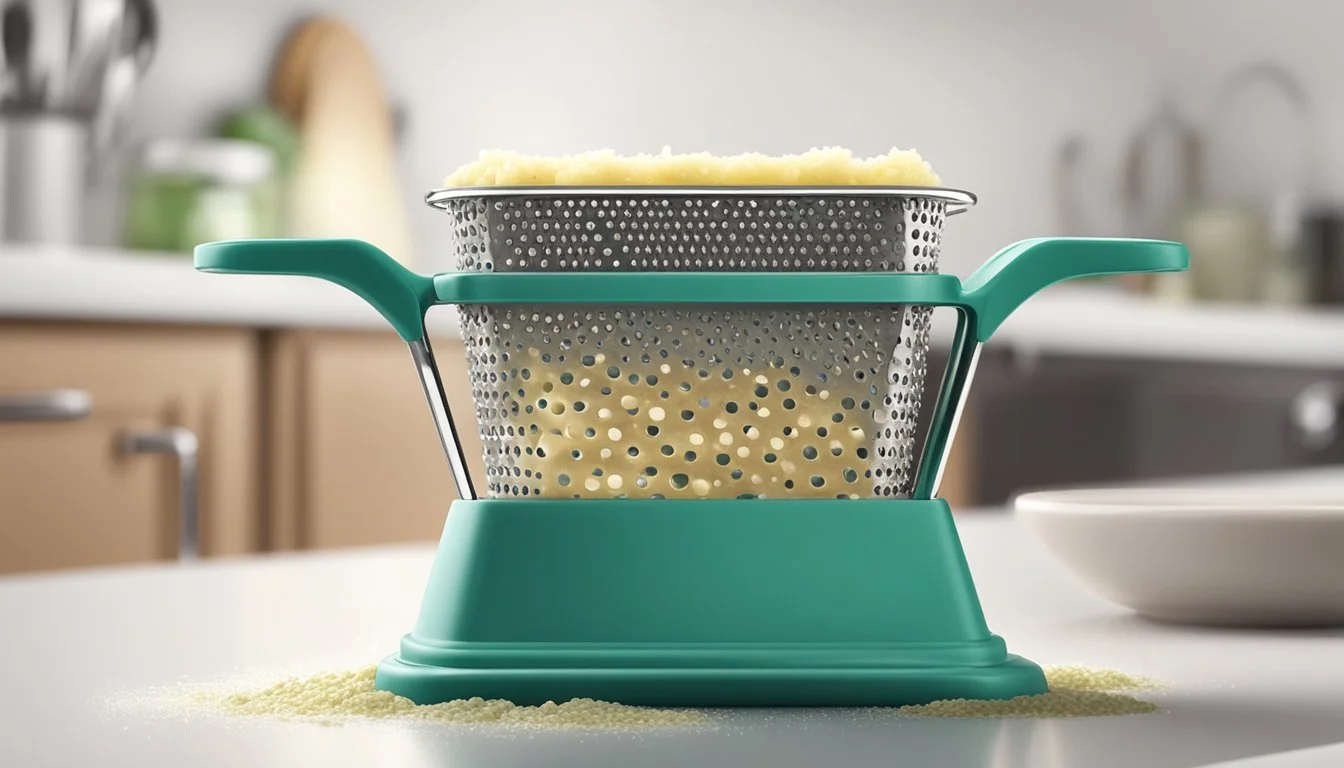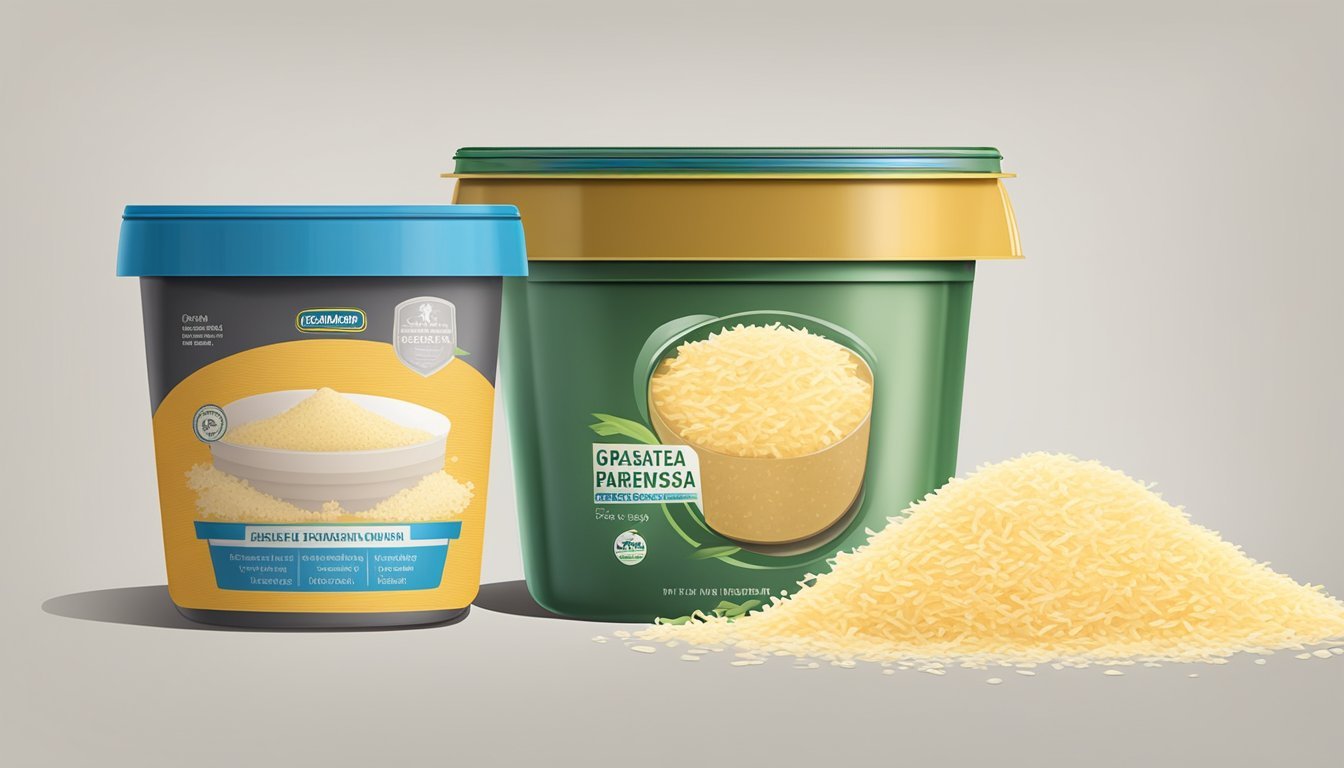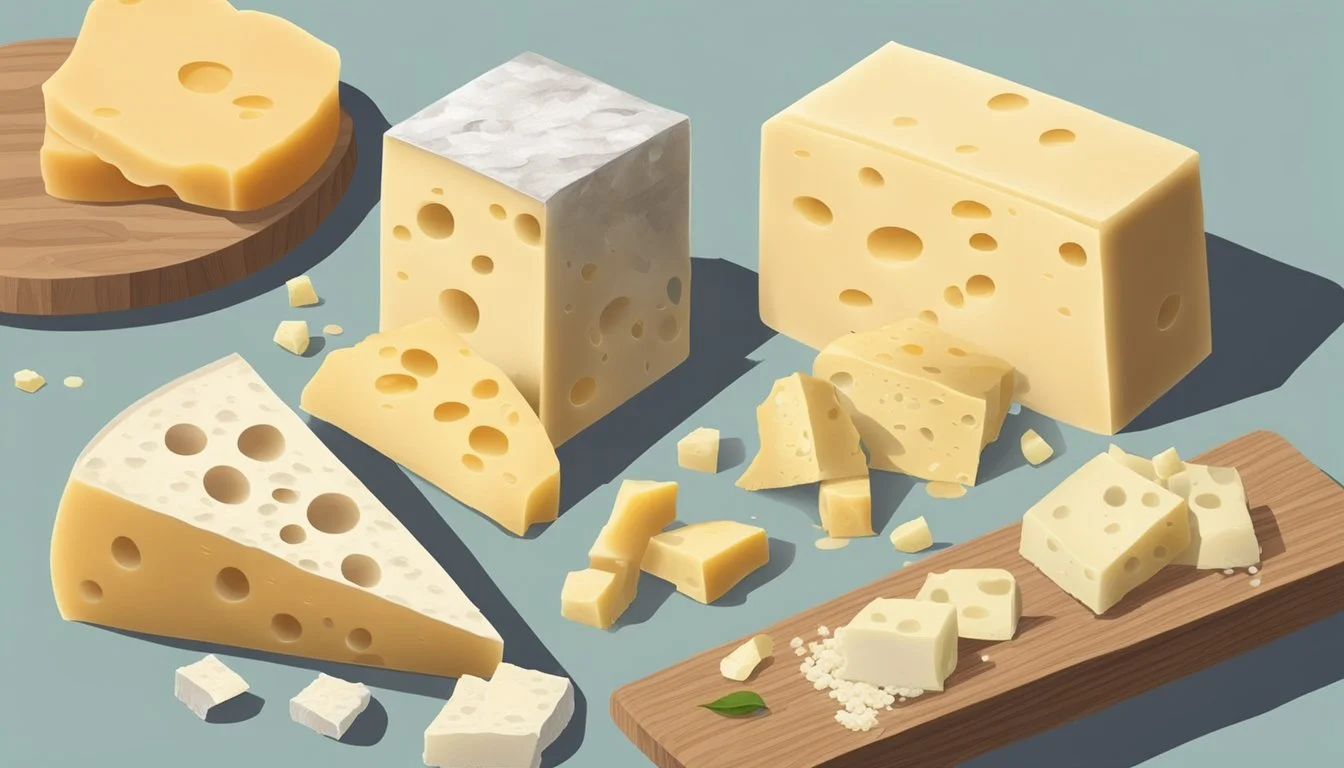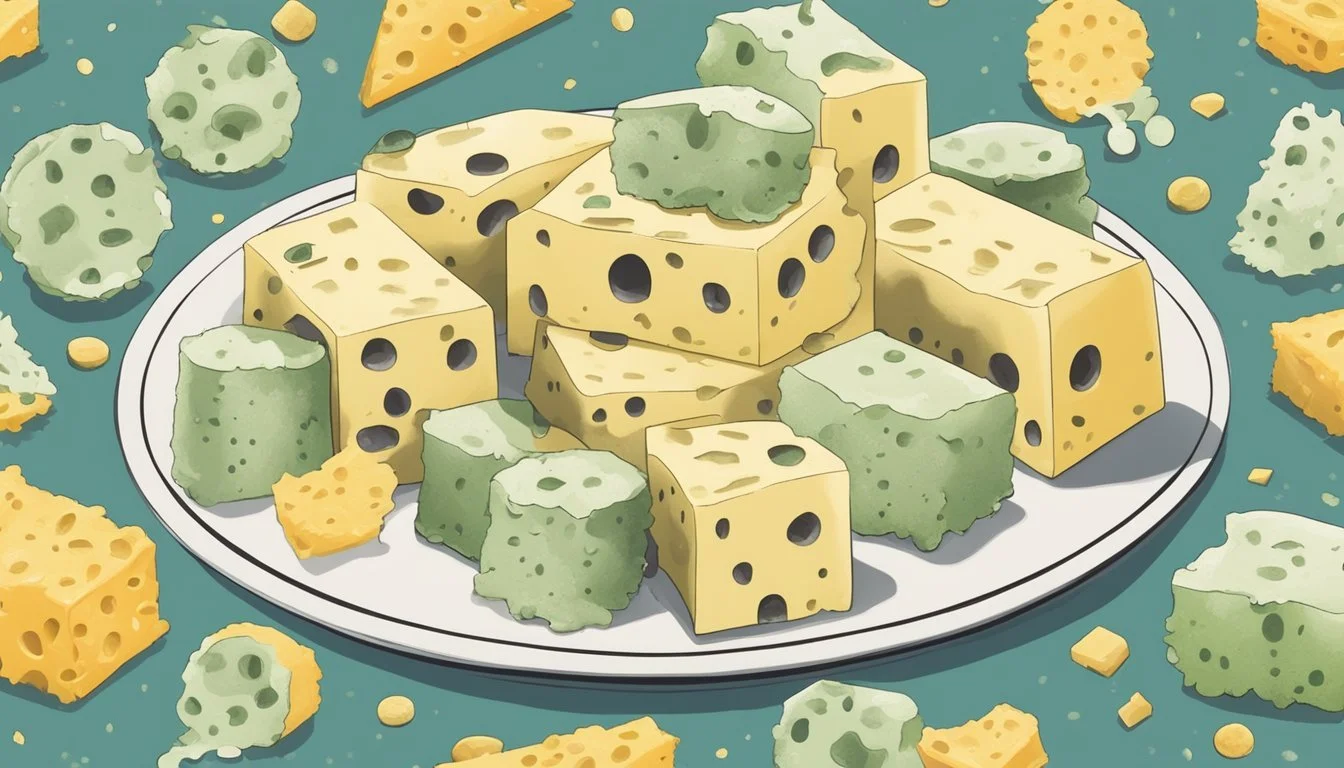Is it Safe to Eat Moldy Grated Parmesan Cheese?
Understanding the Risks
Is it safe to eat moldy grated Parmesan cheese?
When it comes to Parmesan cheese, safety is a top concern, especially if mold appears. For hard cheeses like Parmesan, it is generally safe to cut away the moldy part and consume the rest. Unlike soft cheeses that can harbor mold throughout, hard cheeses have a denser texture, limiting mold penetration.
Health experts suggest removing at least 1 inch (2.5 centimeters) around and below the moldy spot to ensure no contaminated parts are left. Ensuring the knife stays free of mold spores is crucial to avoid cross-contamination. This precaution helps preserve the integrity and safety of the remaining cheese.
While cutting away mold works for small, isolated patches, extensive mold signals that the spores may have spread further, making the cheese unsafe. If there are multiple moldy spots or if the cheese appears deteriorated, it’s best to discard it to prevent potential health risks like food poisoning or allergic reactions. Keeping these guidelines in mind can help you enjoy your Parmesan cheese without worry.
Understanding Mold and Cheese
Mold plays a role in both the spoilage and the production of various cheeses. It is essential to distinguish between beneficial and harmful molds when assessing the safety of consuming cheese.
Types of Mold in Cheese
Molds found in cheese fall into two main categories: good mold and bad mold. Good molds are intentionally introduced during the cheese-making process. Examples include Penicillium roqueforti, used in blue cheeses, and Penicillium camemberti, used in Camembert and Brie. These molds contribute to the flavor, texture, and characteristics of the cheese.
Bad molds appear as unwanted contaminants on cheese surfaces. These molds can have various colors, including green, blue, black, or grey. Bad molds can potentially harbor harmful bacteria and toxins, making the cheese unsafe to consume. The presence of bad mold indicates spoilage, and it is crucial to identify and remove mold-affected areas on hard and semi-soft cheeses like Parmesan.
Significance of Mold in Cheesemaking
Mold's role in cheesemaking is significant for certain types of cheeses. Beneficial molds like Penicillium species are vital in developing the unique flavors and textures of specific cheeses. The mold contributes to the aging process and creates the distinct characteristics appreciated by cheese enthusiasts.
For cheeses such as Parmesan, mold typically doesn't grow deep into the cheese due to its low moisture content. Therefore, minor mold contamination can often be removed by cutting away at least one inch around the affected area. This practice ensures that the remaining cheese is safe for consumption, provided no other signs of spoilage are present.
Cheese makers carefully cultivate these molds under controlled conditions to ensure the optimal quality and safety of the final product. The interplay between mold, bacteria, and cheese is complex, demonstrating the importance of good mold in the craft of cheesemaking.
Parmesan Cheese Characteristics
Parmesan cheese, a hard cheese, is renowned for its distinct features that contribute to its flavor and resistance to mold. Understanding these characteristics can help in deciding whether it is safe to consume after mold appears.
Hard Cheese and Its Resistance to Mold
Parmesan is categorized as a hard cheese, known for its low moisture content. This feature makes it less likely for mold to penetrate deep into the cheese.
Moisture content in hard cheeses like Parmesan is significantly lower than in soft cheeses. Consequently, surface mold can often be removed, allowing the rest of the cheese to remain safe for consumption.
Another key element is its texture. The firmness of Parmesan helps in preventing mold growth internally, as harder structures are tougher for spores to infiltrate compared to softer varieties.
Aging Process and Mold Growth
Parmesan undergoes a long aging process, typically ranging from 12 to 36 months. During aging, its moisture decreases, and its flavor develops, contributing to its mold resistance.
The aging process also influences the cheese's structure. As Parmesan ages, it forms a hard rind that acts as a protective barrier against mold.
However, while the exterior can sometimes develop superficial mold, the extensively aged interior generally remains unaffected due to the protective rind and low moisture.
These characteristics help in identifying and addressing mold on Parmesan without compromising its quality.
Health Risks Associated With Moldy Cheese
Eating moldy cheese presents certain health risks that should not be ignored. There are harmful toxins that can pose serious health issues and specific groups of people who are more vulnerable to these dangers.
Common Mold-Related Health Hazards
Consuming moldy cheese can expose individuals to harmful bacteria such as Listeria, Brucella, E. coli, and Salmonella. These pathogens can cause food poisoning with symptoms including nausea, vomiting, abdominal pain, and diarrhea. Some molds also produce mycotoxins, which are toxic compounds that can lead to severe, long-term health problems.
High-Risk Populations
Certain populations are more susceptible to the dangers of moldy cheese. This includes pregnant women, infants, the elderly, and those with weakened immune systems. For these individuals, exposure to mold-related pathogens like Listeria can result in more severe health complications, including invasive infections and systemic illnesses. Ensuring proper food safety is crucial for these high-risk groups.
Safe Consumption of Moldy Cheese
To ensure safe consumption, it is crucial to distinguish between different types of cheese and understand how to handle moldy spots or determine when to discard the cheese completely.
Methods to Handle Moldy Cheese
For harder cheeses like grated Parmesan, mold generally cannot penetrate deeply. Using a clean knife, cut off the mold at least 1 inch (2.5 centimeters) around and below the moldy spot. Ensuring the knife does not touch the mold prevents contamination of the rest of the cheese.
Hard cheeses such as cheddar, colby, and Swiss can often be salvaged in this way. It is advisable to inspect the remaining cheese carefully for any signs of mold after cutting. Avoid cross-contamination by cleaning utensils thoroughly after each use.
Soft cheeses like cottage, cream cheese, or ricotta, once moldy, should be discarded completely. The mold can spread throughout these cheeses, making it unsafe for consumption.
When to Discard Moldy Cheese
Soft cheeses and shredded or crumbled varieties, including grated Parmesan that has extensive mold, should be thrown away immediately. The nature of these cheeses allows mold to spread more easily, posing a higher risk of foodborne illness.
Visible mold beyond a small spot means the entire cheese is likely compromised. Watch out for cheeses with green, blue, or black spots, especially in soft cheeses or shredded varieties. In these cases, it is safer to discard the entire product to avoid health risks.
Consulting with a cheese professional can provide additional guidance on determining the safety of moldy cheeses. They can offer expert advice specific to the type and condition of the cheese in question.
By following these guidelines, individuals can make informed decisions about consuming moldy cheeses while minimizing the risk of illness.
Storing Cheese to Prevent Mold
Proper storage techniques can significantly extend the shelf life of cheese and minimize the risk of mold growth. This involves maintaining the correct environmental conditions and following best storage practices.
Proper Environmental Conditions
The optimal temperature range for storing cheese is between 35°F and 45°F. The refrigerator's vegetable drawer or a bottom shelf can help maintain this steady temperature. Consistency is key, as fluctuations can lead to condensation, which encourages mold growth.
Avoid placing cheese near the freezer as extreme cold can degrade its texture. A cool, dry environment with limited exposure to direct sunlight or heat sources is ideal. These conditions help preserve both the flavor and texture of the cheese while inhibiting mold development.
Best Practices for Cheese Storage
Using airtight containers is crucial for keeping grated Parmesan cheese mold-free. Resealable bags or containers prevent moisture and airborne spores from reaching the cheese. Plastic wrap or parchment paper can be used to wrap the cheese before placing it in these containers for additional protection.
"Cheese paper" is another effective material that allows the cheese to breathe while protecting it from excess moisture. Regularly check the cheese for signs of mold, and trim off any affected areas generously if mold does develop. Ensure the knife used does not touch contaminated parts to avoid spreading mold.
Guidelines for Enjoying Various Cheeses Safely
Different types of cheese require different handling practices to ensure their flavors and textures are enjoyed safely. From soft cheeses like Brie to hard ones like Cheddar, understanding their characteristics can help in maximizing both flavor and safety.
Understanding Different Cheese Types
Cheeses vary significantly in texture, moisture content, and aging processes.
Soft Cheeses: Brie, Camembert, and cream cheese have high moisture content. They need careful storage and should be discarded if mold appears, as mold can penetrate deeply.
Hard Cheeses: Cheddar and Parmesan have low moisture content. If mold appears, cutting away at least 1 inch around and below the moldy spot can make them safe to consume.
Blue Cheeses: Roquefort and Gorgonzola are made with specific molds that are safe to eat. Nevertheless, any unexpected mold growth should be checked for safety.
Connoisseur Tips for Maximum Flavor and Safety
Certain practices can enhance both the safety and enjoyment of various cheeses.
Storage: Store cheese in conditions suited to its type. Soft cheeses should be kept in the fridge and consumed fresh. Hard cheeses can be sealed in wax paper and then placed in a plastic bag to prolong freshness.
Preparation: Always use clean knives and utensils. For hard cheeses with mold, cut well beyond the visible mold.
Tasting Notes: Enjoy soft cheeses like Brie or Camembert at room temperature. Pair hard cheeses like Parmesan with fruits or nuts. Blue cheeses such as Roquefort should be savored with something sweet like honey to balance their strong flavors.
Cheese Alternatives in Case of Mold Concerns
For people concerned about mold, whether due to allergies or mold formation on cheese, there are various safe substitutes and precautions to consider. The following points outline suggestions for those with mold sensitivities and propose alternative cheese options.
Recommendations for Those with Mold Allergies
Individuals with mold allergies should avoid any cheese with visible mold. Mold present in cheese can trigger allergic reactions, including respiratory issues and skin rashes. To minimize risk, stick to fresh, well-packaged cheeses, which are less likely to develop mold.
Mozzarella and Colby are good choices due to their moisture content and minimal aging process. These varieties typically do not support mold growth as readily as aged cheeses. Additionally, storing cheese in airtight containers can help prevent mold contamination.
For those who enjoy dishes like mac and cheese, using cheeses less prone to mold can be beneficial. Pre-grated cheeses might have preservatives to inhibit mold, but always check labels for such additives.
Substitute Options for Vulnerable Individuals
For those who need to avoid mold, replacing traditional aged cheeses with non-dairy alternatives can be effective. Non-dairy cheeses, often made from nuts or soy, are less likely to harbor mold, offering a safer option. Popular non-dairy brands include Daiya and Tofutti.
Another option involves freshly grated substitutes made from vegetables like zucchini or carrots for flavor and texture in dishes such as mac and cheese. These can mimic the appearance without the risk associated with dairy molds.
Processed cheeses are another alternative, as these undergo pasteurization and have added preservatives, making them less prone to mold. These can be used in various recipes where mold presence is a concern, ensuring a safer culinary experience.
By considering these alternatives and recommendations, those with mold sensitivities can still enjoy a variety of dishes without compromising their health.
Conclusion
When it comes to eating moldy grated Parmesan cheese, the type of mold and extent of contamination are crucial factors.
For hard cheeses like Parmesan, cutting off at least one inch around and below the moldy spot can make the cheese safe to consume. This practice ensures the mold has not spread further into the cheese.
Guidance recommends inspecting any remaining cheese for further mold. If multiple areas show mold, it may indicate deeper contamination, suggesting disposal as the safer option.
Summary of key points:
Grated Parmesan can be safe after trimming mold.
Cut at least one inch around the moldy area.
Multiple mold spots call for caution and possible disposal.
Bottom Line: Properly trimmed moldy Parmesan cheese can still be eaten, but caution should always be exercised to avoid health risks.







